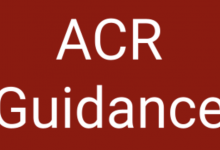Interferon Blocker Disappoints in SLE Save

Yet another setback has occurred in the efforts to develop new medications for treating systemic lupus erythematosus (SLE), as anifrolumab failed to meet the primary endpoint in a phase III trial, according to AstraZeneca and MedImmune.
Only one new drug, belimumab (Benlysta), has been approved for use recently in SLE. When belimumab was licensed in 2011, it was the first drug specifically approved as a lupus treatment in more than 50 years. Since that time, other agents that have had negative results included tabalumab, epratuzumab, and atacicept.
The failure to reduce symptoms significantly more than placebo in the current phase III study, known as TULIP 1 (Treatment of Uncontrolled Lupus via the Interferon Pathway), was unexpected, given the success seen in a phase IIb trial of this monoclonal antibody, which binds to subunit 1 of the type I interferon receptor, blocking the activity of all five type I interferons.
"I can say that there is extremely deep disappointment -- and surprise -- among lupus investigators, the nonprofit organizations that support lupus research, and I'm sure also among patients," Mary K. Crow, MD, physician-in-chief and chair of the Department of Medicine and chair in Immunology and Inflammation Research at the Hospital for Special Surgery in New York City, told MedPage Today.
"While there can never be certainty that any clinical trial will be successful, based on the very strong data in the phase II study, there was broad optimism that this trial would be successful. I sincerely hope the biotech and pharmaceutical industry will continue to pursue drug development in SLE."
The phase IIb study, which was presented 2 years ago at the annual meeting of the European League Against Rheumatism, randomized 305 patients with active SLE to 300 or 1,000 mg of intravenous anifrolumab every 4 weeks or placebo in addition to standard-of-care therapy.
A total of 34.3% of patients in the 300-mg arm of the trial achieved an SLE Responder Index score of 4 (SRI-4) plus a reduction in steroid dose to less than 10 mg/day at day 169 compared with only 17.6% of those in the placebo arm (P=0.014). And at day 365, 62.6% of patients in the 300-mg group had SRI-4 responses, compared with 40.2% of those in the placebo group (P<0.001).
The SRI is a composite measure that includes the SLE Disease Activity Index (SLEDAI), a Physician Global Assessment, and the British Isles Lupus Assessment Group index.
"These are the best lupus data we've ever seen," said Richard Furie, MD, of Northwell Health in Great Neck N.Y., following his presentation of the phase IIb study at the meeting.
The phase II study was followed by the two pivotal TULIP trials evaluating the safety and efficacy of anifrolumab in patients with moderately to severely active, autoantibody positive, SLE. TULIP 1 randomized 460 patients to an intravenous infusion of anifrolumab in doses of 150 or 300 mg or placebo every 4 weeks. TULIP 2 included 373 patients randomly assigned to 300 mg anifrolumab or placebo every 4 weeks. The results of the second pivotal study are expected later this year, and the results of both will be presented at a medical meeting.
Efficacy measures in the TULIP trials included disease activity as measured on the SRI-4, decreased need for steroids, reduction in disease flares, and improvements in skin manifestations.
The type I interferons are inflammatory pathway cytokines. An estimated 60%-80% of SLE patients have an increased type I interferon gene signature, the manufacturer explained in a press release.
Certain questions can be answered only when the actual data from the phase III studies are made available, cautioned Amit Saxena, MD, of New York University School of Medicine, who was one of the investigators for TULIP 2. For example, he said in an interview, one important question is whether anifrolumab had different effects depending on whether patients had a high or low interferon gene signature.
"Anybody can get into the trial, whether they have low or high interferon signatures. Previously, patients who came in with high interferon signatures had very significant improvements. With the results of TULIP 1, the company's press release didn't mention anything about high versus low interferon patients. So even if the trial failed overall, if it still succeeded in patients who came in with high interferon, that still might mean that the drug is useful in that subset of patients."
The SRI-4 also is a fairly strict endpoint, Amit noted. "To have the SLEDAI drop by four points is not always easy, especially if patients are on background therapies or have lower disease activity at baseline. One thing we've seen in a lot of our lupus trials recently is that patients who come in sicker respond better to treatments."










If you are a health practitioner, you may Login/Register to comment.
Due to the nature of these comment forums, only health practitioners are allowed to comment at this time.